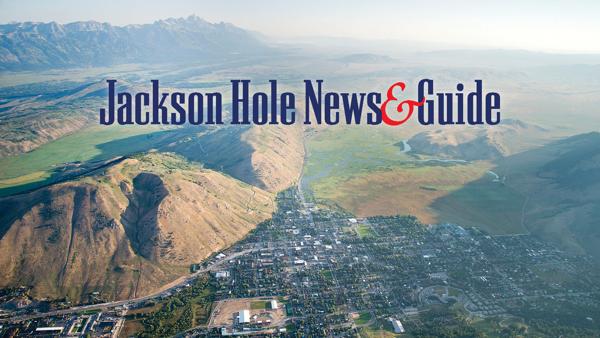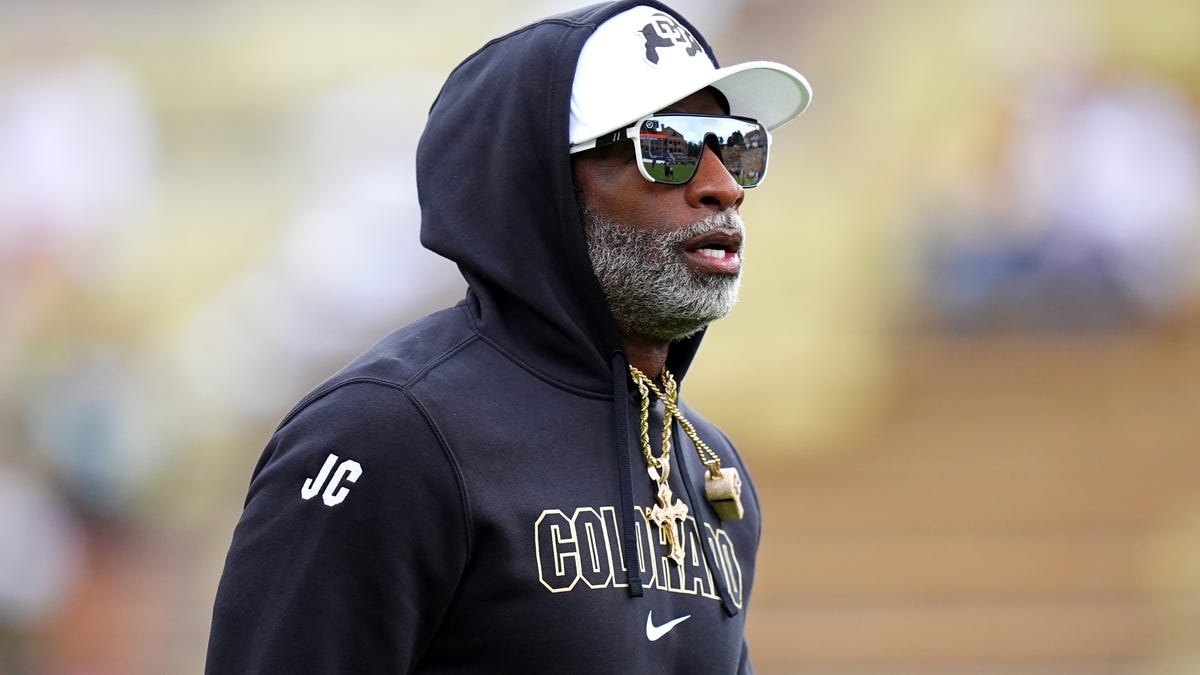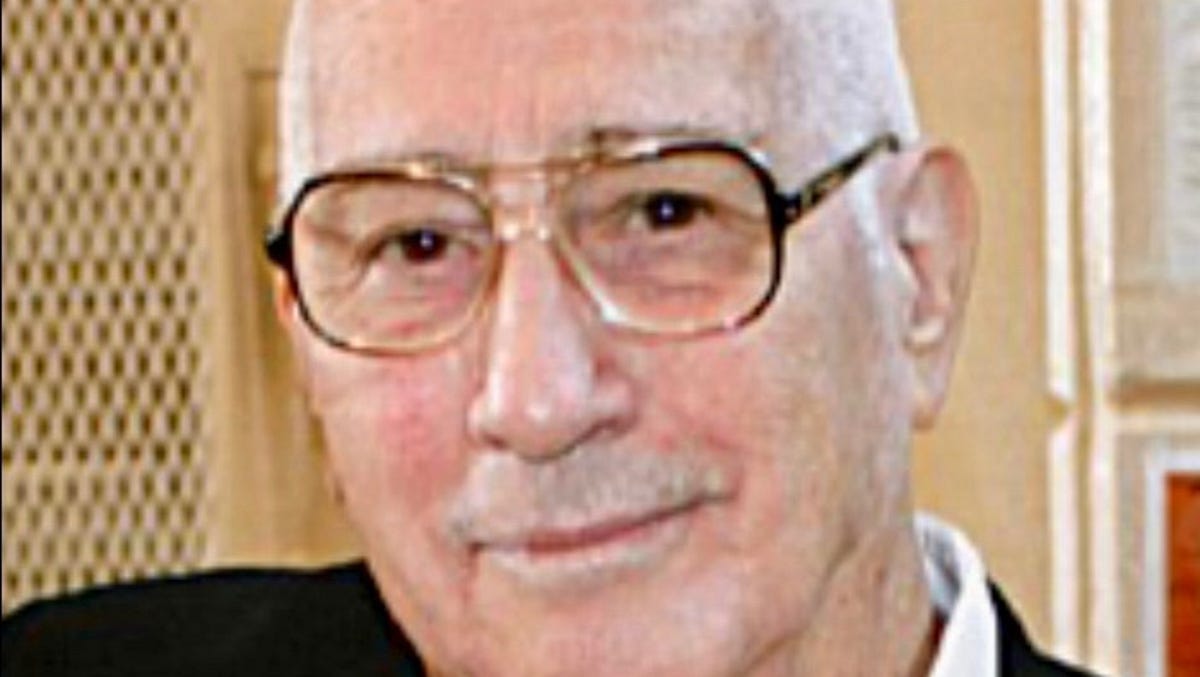Wyoming
Wyoming Guard sex assault reports rise

Wyoming
Educators fill the room as Wyoming lawmakers meet to recalibrate K-12 funding model

Wyoming
Colorado football sells out Wyoming game as 2025 season hype builds

After selling out 2025 season tickets a few weeks ago, the Colorado Buffaloes sold out their first regular season game of the season Wednesday afternoon. Family Weekend will be another packed crowd at Folsom Field as the Sept. 20 game against Wyoming is officially sold out.
Since Deion Sanders arrived in Boulder, Colorado has sold out more games (10) than any two years in school history. With 2025’s first sellout being announced in mid-June, a full month before the first sellout was announced last season.
According to a university press release, other home games are seeking fast as well. The Buffs’ home opener against Georgia Tech on Friday, August 29 is nearly sold out and the demand for tickets is greater than any Colorado home opener in the last five years other than Deion Sanders’ first game in charge.
CU will host plenty of big-time opponents at Folsom Field this season including BYU (Sept. 27), Iowa State (Oct. 11), Arizona (Nov. 1) and Arizona State (Nov. 22).
Colorado went 9-4 in 2024 losing out on an appearance in the Big 12 Championship game on a tiebreaker. The Buffs fell to new conference rival BYU in the Alamo Bowl. The roster will look a lot different this season with Shedeur Sanders and Travis Hunter off to the NFL, but a ticket to see Coach Prime’s Buffs still isn’t easy to come by.
The excitement surrounding Colorado football is at an all-time high since December 2022 when Sanders got hired and that doesn’t appear to be changing with the most recent news.
Follow Charlie Strella on X, Threads, and Instagram.
Contact/Follow us @BuffaloesWire on X (formerly Twitter), and like our page on Facebook for ongoing coverage of Colorado news, notes and opinions.
Wyoming
Wyoming Legion Baseball Schedule For Week 12 Revealed

Wyoming’s Legion baseball teams are in Week 12 of the 2025 season. With tournaments in full swing during the summer, there is at least one tournament game every day this week. The Cheyenne Hawks and Eagles co-host a tournament in the Capital City Thursday through Sunday. That’s the only in-state event. Teams are playing in other tournaments in Montana or Nebraska. Only a handful of conference doubleheaders are on tap, and all but one of those are on Tuesday.
2025 WYOPREPS AMERICAN LEGION BASEBALL SCHEDULE WEEK 12
Game schedules are subject to change. If you have an update or see a game missing, please let WyoPreps know. You can email david@wyopreps.com.
Tournaments
Battle for Omaha 19U Midweek Tournament in Omaha, NE
Final Score: Nevada Sparks 16 Douglas Cats 0 – The Cats were held to 1 hit.
Final Score: Twin Falls (ID) Cowboys 7 Douglas Cats 1 – The Cats had 6 hits but mustered just 1 run. Meeks had an RBI single
Final Score: Sheridan Jets 11 Billings Cardinals 9 – The Jets used a 6-run top of the 7th to win on the road. Martinson had 2 hits & 3 RBIs. Malmberg added a double, 2 RBIs, 3 walks, and 2 runs scored.
Final Score: Billings (MT) Cardinals 11 Sheridan Jets 3 – The Cardinals jumped on Sheridan 6-0 and never trailed. Martinson had 2 hits & 1 RBI for the Jets.
Final Score: Evanston Outlaws 14 Riverton Raiders 1 (conference game) – The Outlaws scored all their runs in the first 3 innings (4,5,5). Windley had a triple & 3 RBIs. Kaman had 1 hit & 2 RBIs. Evanston all took advantage of 6 walks & 8 errors.
Final Score: Evanston Outlaws 6 Riverton Raiders 5 – 8 inns. (conference game) – Osborne had the game-winning, walk-off RBI double in the bottom of the 8th for Evanston. The Outlaws rallied from a 5-0 deficit. Osborne had 2 hits & 2 RBIs.
Final Score: Gillette Rustlers 3 Cheyenne Eagles 1 (conference game) – Gillette used 2 in the 3rd to take the lead and added an insurance run in the 6th. Wood, Smith, and Fitzgerald had 1 hit & 1 RBI each.
Final Score: Gillette Rustlers 11 Cheyenne Eagles 1 (conference game) – The Rustlers scored 4 runs in the 1st and 3rd innings for the sweep. Reed had 2 hits & 2 RBIs to lead a 14-hit attack.
Final Score: Blackfoot (ID) Post 23 23 Jackson Giants 1 – Blackfoot scored 6 or more runs in all 3 innings. Moore had 1 hit & 1 RBI for Jackson.
Final Score: Blackfoot (ID) Post 23 14 Jackson Giants 4 – The Giants led 4-2, but Blackfoot rallied with 4 in the 3rd, 2 in the 4th, and 6 in the 6th. Garcia had 1 hit & 1 RBI for Jackson.
Final Score: Powell Pioneers 7 Green River Knights 3 (conference game) – The Pioneers scored 3 runs in the 6th to pull away. Bieber led the way with 2 hits & 4 RBIs for Powell.
Final Score: Powell Pioneers 14 Green River Knights 6 (conference game) – Powell jumped out to 4-0 lead and added a pair of 5-run innings.
Final Score: Lovell Mustangs 5 Cody Cubs 0 (conference game) – Tucker Jackson tossed a 4-hit shutout with 11 Ks and 2 walks for Lovell. Edwards had 1 hit & 2 RBIs for the Mustangs.
Final Score: Cody Cubs 16 Lovell Mustangs 1 (conference game) – The Cubs scored 5 runs in the 1st and capped it with 7 runs in the 4th. Jarrett hit 2 HRs and drove in 5. M. Bailey also homered and drove in 4. T. Bailey added 2 hits & 4 RBIs.
Final Score: Torrington Tigers 4 Wheatland Lobos 2 (conference game) – The Tigers used a 3-run 4th to take the lead and game one. Hibben had 3 hits (2-2B) & 1 RBI. Kelly added 2 RBIs after reaching on an error for the Tigers.
Final Score: Wheatland Lobos 13 Torrington Tigers 3 (conference game) – Wheatland busted the game open with 9 runs in the 2nd inning. Lind, Collar, and Steinsiek drove in 2 runs apiece. The Lobos took advantage of 8 walks and 5 errors.
Tournaments
Battle for Omaha 19U Midweek Tournament in Omaha, NE
Final Score: Northside Post 630 (Minneapolis, MN) 10 Douglas Cats 5 – Northside led 9-0 after two innings. Carter had 3 hits (2B) & 1 RBI for the Cats.
Tournaments
Battle for Omaha 19U Midweek Tournament in Omaha, NE
Douglas Cats vs. Watertown (MN) Post 121 SR 18O, 7 a.m.
Creighton Prep CWS Classic in Omaha, NE
Cheyenne Sixers vs. Omaha (NE) Westside, 11 a.m.
Sheridan Troopers vs. Wayzata, MN, 11 a.m.
Cheyenne Sixers vs. Dickinson, ND, 1:30 p.m.
Sheridan Troopers vs. North Platte, NE, 1:30 p.m.
Gillette Riders vs. Lincoln (NE) East, 6:30 p.m.
Read More Legion Baseball News from WyoPreps
WYOPREPS LEGION BASEBALL STANDINGS 6-16-25
WYOPREPS LEGION BASEBALL WEEK 11 SCORES
WYOPREPS LEGION BASEBALL WEEK 10 SCORES
WYOPREPS LEGION BASEBALL WEEK 9 SCORES
WYOPREPS LEGION BASEBALL WEEK 8 SCORES
WYOPREPS LEGION BASEBALL WEEK 7 SCORES
WYOPREPS LEGION BASEBALL WEEK 6 SCORES
Riverton Raiders at Laramie Rangers AA, 2 & 4 p.m.
Rock Springs Stallions at Evanston Outlaws, 6 p.m.
Tournaments
2025 Tri-State Border War Tournament in Cheyenne, WY
Mountain View (Loveland, CO) at Cheyenne Hawks, 6 p.m. (Powers Field)
Wellington, CO at Cheyenne Eagles, 6 p.m. (Pioneer Park)
Buffalo Wild Wings Tournament 2025 in Billings, MT
Lovell Mustangs vs. Billings (MT) Blue Jays, 10 a.m.
Gillette Rustlers vs. Parker (CO) Lightning 16U, 12:30 p.m.
Powell Pioneers vs. Sheridan Jets, 12:30 p.m.
Green River Knights vs. Lovell Mustangs, 3 p.m.
Powell Pioneers vs. Williston, ND, 3 p.m.
Gillette Rustlers vs. Fort MacLeod, Alberta, 5:30 p.m.
Clair Conley Tournament in Alliance, NE
Torrington Tigers vs. Mitchell, SD, 2:30 p.m.
Casper Drillers vs. Rapid City (SD) Sliders 18U, 5 p.m.
Torrington Tigers at Alliance (NE) Spartans, 7:15 p.m.
Creighton Prep CWS Classic in Omaha, NE
Gillette Riders vs. Rapid City (SD) Post 22 Hardhats, 11 a.m.
Gillette Riders at Creighton Prep (NE), 1:30 p.m.
Cheyenne Sixers vs. Lincoln (NE) Southwest, 6:30 p.m.
Sheridan Troopers vs. Lincoln (NE) Northeast, 6:30 p.m.
Harold Gjerde Memorial Tournament in Lewistown, MT
Cody Cubs vs. Glendive, MT, 6 p.m.
Missoula Memorial Tournament in Missoula, MT
Casper Oilers at Missoula (MT) Mavericks, 7 p.m.
Eugene, OR at Jackson Giants, 4 & 6 p.m.
Tournaments
2025 Tri-State Border War Tournament in Cheyenne, WY
Wheatland Lobos vs. Timnath (CO) Cubs, 1 p.m. (Powers Field)
Laramie Rangers A vs. LB Baseball (Fort Collins), 3:30 p.m. (Pioneer Park)
Wheatland Lobos vs. North Platte, NE, 3:30 p.m. (Powers Field)
Laramie Rangers A at Cheyenne Eagles, 6 p.m. (Pioneer Park)
North Platte, NE at Cheyenne Hawks, 6 p.m. (Powers Field)
Buffalo Wild Wings Tournament 2025 in Billings, MT
Sheridan Jets vs. Williston, ND, 10 a.m.
Green River Knights vs. Pocatello (ID) Razorbacks, 10 a.m.
Powell Pioneers vs. Lethbridge, Alberta, 12:30 p.m.
Green River Knights at Billings (MT) Blue Jays, 3 p.m.
Lovell Mustangs vs. Pocatello (ID) Razorbacks, 3 p.m.
Sheridan Jets vs. Lethbridge, Alberta, 5:30 p.m.
Gillette Rustlers at Billings (MT) Cardinals, 8 p.m.
Clair Conley Tournament in Alliance, NE
Casper Drillers vs. Buckley Bombers (Chappell, NE), 10:15 a.m.
Casper Drillers at Alliance (NE) Jr. Spartans, 12:30 p.m.
Torrington Tigers vs. Fort Morgan, CO, 5 p.m.
Creighton Prep CWS Classic in Omaha, NE
Gillette Riders vs. Millard (NE) West, 8:30 a.m.
Cheyenne Sixers vs. Bozeman (MT) Bucks AA, 11 a.m.
Gillette Riders vs. Minot, ND, 11 a.m.
Sheridan Troopers vs. Fargo (ND) Post 2, 11 a.m.
Cheyenne Sixers vs. Brandon Valley, SD, 1:30 p.m.
Sheridan Troopers at Papillion, NE, 1:30 p.m.
Harold Gjerde Memorial Tournament in Lewistown, MT
Cody Cubs vs. Belgrade, MT, 10:15 a.m.
Cody Cubs vs. Butte, MT, 12:30 p.m.
Missoula Memorial Tournament in Missoula, MT
Casper Oilers vs. West Plains Cannons (Medical Lake, WA) 18U, 1 p.m.
Casper Oilers vs. Spokane (WA) Expos, 4 p.m.
Buffalo Bulls at Powell B, 1 & 3 p.m.
Tournaments
2025 Tri-State Border War Tournament in Cheyenne, WY
Premier West (Denver, CO) at Cheyenne Eagles, 9 a.m. (Pioneer Park)
Timnath (CO) Cubs at Cheyenne Hawks, 9 a.m. (Powers Field)
Laramie Rangers A vs. Premier West (Denver), 11:30 a.m. (Pioneer Park
Laramie Rangers A vs. Wellington, CO, 2 p.m. (Pioneer Park)
Wheatland Lobos vs. Mountain View (Loveland, CO), 4:30 p.m.
LB Baseball (Ft. Collins) at Cheyenne Eagles, 7 p.m.
Wheatland Lobos at Cheyenne Hawks, 7 p.m.
Buffalo Wild Wings Tournament 2025 in Billings, MT
Gillette Rustlers vs. TBD
Green River Knights vs. TBD
Lovell Mustangs vs. TBD
Powell Pioneers vs. TBD
Sheridan Jets vs. TBD
Clair Conley Tournament in Alliance, NE
Torrington Tigers vs. Alliance (NE) Jr. Spartans, 2:30 p.m.
Casper Drillers at Alliance (NE) Spartans, 5 p.m.
Creighton Prep CWS Classic in Omaha, NE
Gillette Riders vs. Elkhorn, NE, 8:30 a.m.
Sheridan Troopers vs. Watertown, SD, 8:30 a.m.
Cheyenne Sixers at Gretna, NE, 1:30 p.m.
Harold Gjerde Memorial Tournament in Lewistown, MT
Cody Cubs vs. Miles City (MT) Mavericks, 10:15 a.m.
Missoula Memorial Tournament in Missoula, MT
Casper Oilers vs. Fairfield (CA) Expos 19U, 10 a.m.
Douglas Cats at Buffalo Bulls, Noon & 2:30 p.m. (conference games)
Rock Springs Stallions at Evanston Outlaws, 1 & 3:30 p.m.
Tournaments
2025 Tri-State Border War Tournament in Cheyenne, WY
Cheyenne Hawks vs. TBD
Cheyenne Eagles vs. TBD
Laramie Rangers A vs. TBD
Wheatland Lobos vs. TBD
Buffalo Wild Wings Tournament 2025 in Billings, MT
Gillette Rustlers vs. TBD
Green River Knights vs. TBD
Lovell Mustangs vs. TBD
Powell Pioneers vs. TBD
Sheridan Jets vs. TBD
Clair Conley Tournament in Alliance, NE
Casper Drillers vs. TBD
Torrington Tigers vs. TBD
Creighton Prep CWS Classic in Omaha, NE
Cheyenne Sixers vs. TBD
Gillette Riders vs. TBD
Sheridan Troopers vs. TBD
Harold Gjerde Memorial Tournament in Lewistown, MT
Cody Cubs vs. TBD
Missoula Memorial Tournament in Missoula, MT
Casper Oilers vs. Great Falls (MT) Chargers, 11:30 a.m.
Laramie Rangers Baseball 2025
Laramie Rangers, American Legion Baseball, Baseball, Wyoming Legion Baseball
Gallery Credit: Courtesy: MaryRose Aragon
-

 Business1 week ago
Business1 week agoYale’s Endowment Selling Private Equity Stakes as Trump Targets Ivies
-

 Culture1 week ago
Culture1 week agoBarbara Holdridge, Whose Record Label Foretold Audiobooks, Dies at 95
-

 Science1 week ago
Science1 week agoIn Taxicab Geometry, Pi Equals 4 and Circles Aren’t Round
-

 News1 week ago
News1 week agoYosemite Bans Large Flags From El Capitan, Criminalizing Protests
-

 Culture1 week ago
Culture1 week agoA Murdered Journalist’s Unfinished Book About the Amazon Gets Completed and Published
-

 Culture1 week ago
Culture1 week agoHow Many Memorable Lines Can You Match Up With Their Novels?
-

 Politics1 week ago
Politics1 week agoFox News Politics Newsletter: Hillary ‘Can’t Handle the Ratio'
-

 Education1 week ago
Education1 week agoWhat Happens to Harvard if Trump Successfully Bars Its International Students?



















